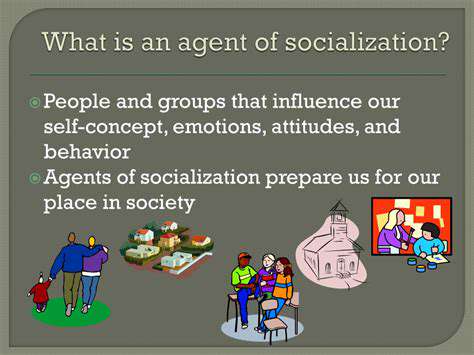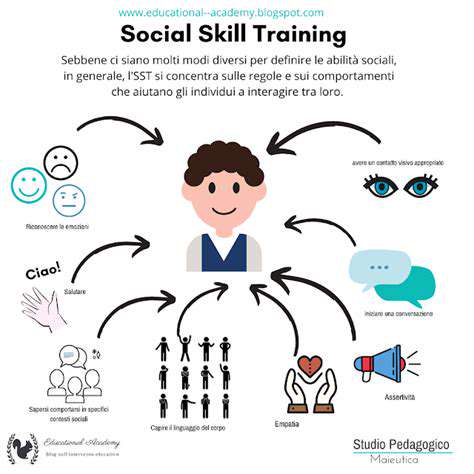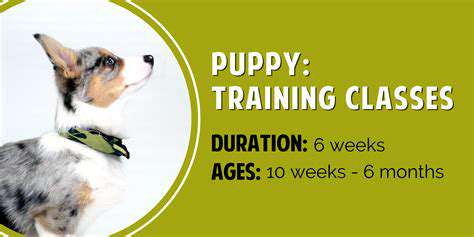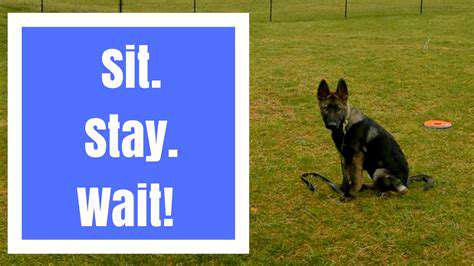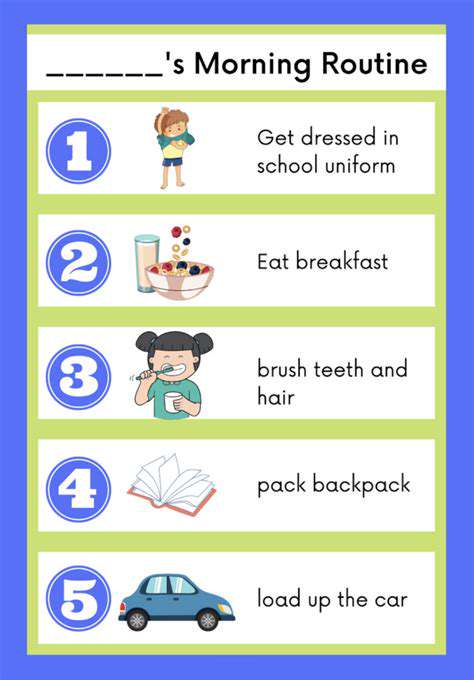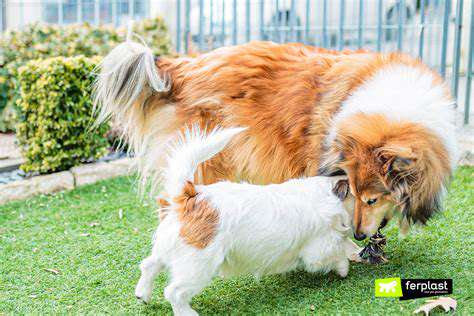We provide practical advice and step-by-step guides on socialization, obedience training, and behavior management. Our goal is to empower you with the knowledge and tools needed for a strong, positive relationship with your puppy.
The Power of Treats Training your puppy can be a rewarding journey, and incorporating treats is a proven strategy for success. This page delves into the psychology of puppy training, highlighting the importance of positive reinforcement and the role treats play in building strong bonds between you and your furry friend. Understanding Puppy Training PsychologyPuppies are naturally curious and eager to please, making them responsive to rewards during training. Utilizing treats can activate their brains and enhance learning through positive reinforcement, which is often more effective than traditional punitive measures. Choosing the Right TreatsSelecting the ideal treats boosts the effectiveness of your training sessions. Opt for high-value, easily digestible treats that appeal to your puppy's tastes. Consider nutritional balance by ensuring treats represent no more than 10% of daily caloric intake, maintaining your puppy’s health while supporting training progress. The Importance of TimingEffective training hinges on the timely delivery of rewards. Providing a treat immediately after your puppy exhibits desired behavior helps reinforce their learning. For example, when they sit on command, reward them promptly to establish a clear connection between their action and the reward. Incorporating Treats in Training StrategiesTreats can enhance various training approaches, including clicker training and distraction-based methods. By associating treats with positive behaviors, you encourage your puppy to focus and comply more readily. Cautions in Treat UsageWhile treats are effective training tools, over-reliance can lead to treat dependency. Gradually integrate praise and physical affection as rewards to foster independence. Be mindful of your puppy’s dietary needs to avoid adverse reactions or allergies. Monitoring Training ProgressTracking your puppy's responses to commands without treats allows you to gauge the effectiveness of your training methods. If your pup starts following commands consistently, you can begin to lessen the frequency of treat rewards, promoting lasting behavioral change. Building Stronger Bonds Through TrainingUsing treats not only reinforces desired behaviors but also strengthens the emotional connection between you and your puppy. The joy of shared moments during training fosters a trusting relationship, critical for a well-adjusted adult dog. Tips for Successful Treat-Driven Training1. Understand Motivation: Each puppy is unique; knowing what excites them (food, play) is key.2. Select High-Quality Treats: Choose small, enticing options that won’t distract from training.3. Establish Consistency: Create a routine to improve focus and learning retention.4. Utilize Positive Reinforcement: Reward immediately for best results and clearer associations.5. Gradual Reduction of Treats: Move to intermittent rewards to maintain engagement without relying solely on treats.6. Incorporate Training into Daily Life: Weave commands into everyday activities for more natural learning experiences.7. Stay Patient and Observant: Adjust techniques based on your puppy’s progress and mood. Create a Fun Learning EnvironmentA positive, distraction-free training space is crucial. Incorporate play and rewards like treats to make learning enjoyable. Regularly assess your puppy's development and adapt your training techniques accordingly.With these guidelines, you'll be well-equipped to train your puppy effectively, ensuring a happy and obedient companion for years to come.
Apr 17, 2025
The Importance of Early Exposure to Clothing for Puppies As new puppy owners, understanding your furry friend’s comfort with clothing is essential for their emotional and physical well-being. Puppies are naturally sensitive to various stimuli, including textiles, which leads to the importance of early exposure to clothing. This article explores the significance of introducing clothing in a gradual, positive manner, and provides practical tips for making the experience enjoyable for your puppy. Understanding Sensitivity in PuppiesPuppies are equipped with developing nervous systems, making them more susceptible to tactile sensitivities. Early acclimatization with different fabrics and textures can significantly reduce future anxiety regarding clothing. Studies suggest that socialization before the age of 16 weeks fosters adaptability, allowing puppies to confidently engage with their environment as adults. Building Positive Associations with ClothingUtilizing positive reinforcement, such as treats and praise, during clothing introductions can create favorable associations for your puppy. Start small with lightweight garments, linking their experience with playtime or enjoyable activities. This method encourages trust, making dressing a non-stressful routine. Safety and Comfort ConsiderationsSafety should be a top concern when introducing clothing. It’s crucial to select items that are safe, fit well, and allow for natural movement. Monitor your puppy's reactions for signs of discomfort, like excessive scratching or attempts to remove the clothing. Ensuring that garments are breathable and match your puppy's activity level will enhance their experience. Long-Term Benefits of Early Clothing ExposureGradual exposure to clothing fosters long-term confidence and reduces behavioral issues. Puppies that are introduced to clothing can adapt more effortlessly to essential items like jackets and harnesses later in life, making them more prepared for various situations and environments. Choosing the Right ClothingUnderstanding your puppy's breed and size is vital for selecting appropriate clothing. Be sure to measure your puppy accurately to avoid discomfort. Materials should be soft and breathable, accommodating seasonal needs. Moreover, prioritize comfort and ease of movement to prevent anxiety while wearing clothing. Introducing Clothing GraduallyGauge your puppy’s comfort level with new textures and items before introducing clothing. Employ gradual methods, like letting them sniff garments before wearing them. Use positive reinforcement during the introduction process to build comfort over time. Monitor their progress closely and adjust based on their cues. Enhancing Socialization through AccessoriesClothing can enhance social interactions by helping puppies feel more confident. Start with less restrictive apparel, and progressively introduce various accessories to create a familiar environment. Engage in positive social settings to observe how your puppy reacts and to promote confidence. Monitoring Comfort and AdaptationEach puppy adjusts differently to clothing. Keep an eye on their body language and reactions to understand their comfort levels. If discomfort persists, consult a professional who can provide tailored guidance.In conclusion, early exposure to clothing, when introduced thoughtfully and positively, is crucial for a puppy’s growth and socialization. This practice not only enhances their confidence but also sets the stage for a happy, well-adjusted adult dog. By prioritizing comfort, safety, and a gradual introduction, you can make dressing your puppy an enjoyable experience for both of you.
Apr 15, 2025
The Fundamentals of “Sit,” “Stay,” and “Come”Understanding the basic commands for your puppy is crucial in establishing a solid foundation for good behavior. This guide explores three essential commands—Sit, Stay, and Come—as cornerstones of effective training. Sit: A Basic Yet Fundamental CommandThe command sit is one of the first instructions your puppy should learn. Not only does it foster communication between you and your pet, but it also instills a sense of trust. Teaching sit can help curb unwanted behaviors like jumping and can effectively manage your puppy’s energy levels. How to Teach Sit:1. Hold a treat above your puppy’s nose.2. Move the treat backward; this will prompt your puppy to lower its bottom.3. As soon as they sit, reward them with the treat and praise.Engaging in short training sessions of 5-10 minutes multiple times a day aids in retention. Over time, you’ll notice significant improvements in your puppy's obedience. Stay: Instilling Patience and ControlTeaching stay involves instilling a sense of patience in your puppy. This command reinforces boundaries and control, making your pet more sociable and well-rounded. Training requires patience and consistency, as puppies learn at varying speeds.Effective Techniques for Teaching Stay:- Start in a quiet, controlled environment to minimize distractions.- Gradually increase the distance while your puppy remains in place.- Combine verbal commands with hand signals to enhance understanding.Incorporating stay into your puppy's daily routine can reinforce learning while making training feel less like a chore. Come: Building Trust and SafetyThe come command is vital for your puppy's safety, helping them build trust and enhancing their ability to respond positively to commands. Positive reinforcement plays a crucial role; offering treats or affection after compliance fosters a secure environment for learning.Safety Tips During Training:- Begin training in a confined area to minimize distractions.- Keep sessions short and engaging to avoid overexertion. Tips for Successful Training1. Understanding Learning Styles: Each puppy is unique. Some may respond better to visual cues, while others thrive on verbal commands. Tailoring your approach can enhance their learning speed.2. Positive Training Environment: Ensure a calm, distraction-free training space. Utilize positive reinforcement to create a supportive atmosphere that encourages focus.3. Consistency: Use the same commands and signals every time you train. Involve family members to ensure uniformity in training approaches.4. Incorporating Training into Daily Life: Embed commands into everyday activities—like asking your puppy to sit before meals or when putting on their leash—to reinforce learning naturally.5. Monitoring Progress: Regularly check your puppy's progress. Adjust techniques based on their needs and celebrate small victories to keep both you and your puppy motivated. ConclusionInvesting time in teaching your puppy commands like sit, stay, and come sets the groundwork for a well-behaved and harmonious relationship. Patience, consistency, and positive reinforcement are your keys to success. With daily practice, you can guide your puppy toward becoming a confident and obedient companion.
Apr 14, 2025
Your Essential Guide to Puppy TrainingSummaryThe Stay command is a fundamental skill for every puppy, serving as a cornerstone for impulse control and safety in various environments. Within this comprehensive guide, we'll delve into the essential aspects of teaching your puppy the Stay command, from foundational training techniques to troubleshooting challenges, ensuring your furry friend becomes well-behaved and attentive. Importance of the Stay CommandThe Stay command is not just about getting your dog to halt; it enhances their impulse control and strengthens the bond of trust between you and your puppy. This command is particularly crucial in high-distraction situations, such as vet visits, where staying calm is imperative. Step-by-Step Training TechniquesTraining your puppy to Stay begins in a quiet, distraction-free environment. Start with clear, firm commands and progressively increase the distance and duration of the stay. Consistency and short, regular sessions are key to reinforcing the behavior and building your puppy's confidence. Common Mistakes to AvoidAvoid using multiple verbal cues or hand signals, as this can confuse your puppy. Stick to a clear command and ensure immediate rewards following successful stays, as timing is crucial in reinforcing desired behavior. Encouraging Longer DurationsOnce your puppy masters the basic Stay command, incorporate duration training. Gradually extend the time they must remain in place before receiving a reward, which fosters patience and focus, especially in distracting environments. Integrating Stay into Daily LifeTo enhance obedience, practice the Stay command in various daily situations, such as before meals or during walks. Involve family members for varied command reinforcement, helping your puppy generalize the skill across different contexts. Troubleshooting ChallengesIf your puppy struggles with the Stay command due to excitement or anxiety, reevaluate your training environment. Maintain a calm setting, and never scold; gentle guidance and positive reinforcement will yield better results. Building a Strong BondTraining is a fantastic opportunity to strengthen your connection with your puppy. Use positive reinforcement techniques and engage in playful activities, making the learning journey enjoyable for both you and your dog. Practicing in Different EnvironmentsExpose your puppy to varying distractions by practicing commands in different settings, which helps improve their focus and resilience. Short, consistent training sessions can lead to remarkable progress in diverse environments. Utilizing Training Tools and TechnologyModern tools, including clickers and apps, can enhance your training experience. Choose the right equipment based on your puppy's temperament and ensure personalized interaction for effective learning outcomes.ConclusionTraining your puppy to master the Stay command takes patience and dedication but results in a well-mannered pet you can trust. By employing the strategies outlined in this guide, you’ll build a solid foundation for future training, leading to a happier and more confident pup.
Apr 13, 2025
The Importance of Texture Exposure for Puppies Enhance Your Puppy’s Development Through Texture ExplorationExposing your puppy to diverse textures plays a vital role in their physical and psychological development. As puppies navigate various surfaces such as grass, concrete, and wood, they learn to adapt and build confidence. Essential for stimulating their senses, texture exposure shapes their behavior and assists in their overall growth. Types of Textures and Their EffectsDifferent surfaces impact puppies uniquely. For instance, grass promotes relaxation, while concrete challenges them physically. Introducing various textures not only boosts their mobility skills but also helps in fostering a well-rounded temperament. Each new experience contributes to their cognitive growth, allowing them to explore with less anxiety as they mature. Incorporating Textures in Daily ActivitiesMake texture exploration part of your puppy's routine by including varied materials in playtime. Use different textured toys, and take alternate walking routes to expose them to new surfaces. Encourage your puppy to investigate these textures positively through gentle guidance and rewards. Engaging with Natural Textures OutdoorsNature offers puppies rich sensory experiences through its variety of textures. Taking your puppy for hikes introduces them to bark, dirt, and leaves, promoting curiosity and exploration. Regular outdoor adventures contribute significantly to their confidence and understanding of the world around them. Safety ConsiderationsPrioritize safety when engaging with new surfaces. Inspect areas for hazards and avoid extremes in temperature. Use protective measures such as booties to safeguard their paws from injuries during exploration. Monitoring Progress and Behavioral ChangesKeep track of your puppy’s reactions to different textures over time. Observing their comfort levels helps you understand their growth and identify any potential anxieties. A diary can be beneficial in documenting these changes, enabling you to tailor experiences to their evolving needs. Creating Safe Indoor Exploration SpacesEnsure your home offers a safe area for exploring various indoor textures. Designate a space with different materials like foam mats and area rugs, gradually introducing new textures. Monitor their reactions, and reward positive engagement to instill confidence. Socialization Through Puppy PlaydatesOrganize playdates with compatible puppies in a safe environment. Introducing various textures during playful interactions helps them build a confident temperament. Close monitoring during these sessions ensures positive experiences and reduces any stress. Progress Tracking and AdaptationRegularly evaluate and adapt your approach based on your puppy’s feedback. Create a structured space with varied textures, and utilize positive reinforcement techniques to encourage exploration. Celebrate small successes as you guide them through their growth journey. ConclusionTexture exposure is crucial for your puppy’s development, shaping their sensory experiences and adaptability. Incorporate a variety of textures in their environment, assess their comfort levels, and ensure engaging experiences that foster confidence. With safe exploration and gradual exposure, you'll set the foundation for a well-adjusted, confident adult dog.
Apr 12, 2025
The Impact of Early Socialization on Adult Dog Behavior
Apr 11, 2025
A Comprehensive Guide to Puppy TrainingUnderstanding why puppies break the Down command is crucial for both new and experienced dog owners. From environmental distractions to energy levels, various factors can impact a puppy's ability to follow commands consistently. This guide offers insights into common issues and effective techniques for reinforcing the Down command, ensuring a well-behaved and obedient pup. Common Reasons Puppies Break the Down CommandPuppies often struggle to maintain the Down position due to numerous distractions. Noises, other pets, or exciting movements can divert their attention, making it essential to identify and manage these triggers. Moreover, misunderstandings of the command itself can lead to confusion, emphasizing the need for clear communication and consistent reinforcement. Effective Strategies for ReinforcementUtilizing positive reinforcement techniques is key to enhancing a puppy's response to the Down command. Employ treats, praise, and structured training schedules to create an engaging learning environment. Short sessions of 5–10 minutes can keep your puppy focused and interested, especially when practiced in a distraction-free area. Monitoring Progress and Adjusting TechniquesRegularly assessing your puppy’s progress allows for necessary adjustments in training methods. If your pup frequently breaks the command, consider modifying the training environment, session duration, or even your approach. Employing a calm demeanor is also critical, as it fosters confidence and trust during training. Creating a Distraction-Free EnvironmentTo teach the Down command effectively, begin in a quiet, controlled space. Reducing noise and movement will enhance focus, allowing your puppy to grasp the command more easily. Gradually introduce distractions only as your puppy becomes more reliable, ensuring they maintain focus despite external stimuli. Consistency in TrainingConsistency is paramount in dog training. Use the same verbal command and tone, avoiding variations that could confuse your puppy. Pairing verbal cues with hand signals can further solidify their understanding. Training should be regular and predictable, aligning with your puppy's natural energy levels for maximum engagement. Building Independence in Command FollowingAs your puppy becomes more proficient with the Down command, encourage them to follow it independently. Reducing prompts and gradually introducing more challenging environments will help strengthen their self-control. This ensures they can maintain the command even in exciting situations, which is critical for overall training success. The Importance of the Stay CommandTeaching the Stay command is equally essential for safety and good behavior. It can prevent your puppy from running into hazardous situations and promote calmness in unexpected events. Utilizing positive reinforcement, consistency, and diverse training environments will facilitate quicker learning and a deeper bond between you and your puppy. Patience and Persistence in TrainingFinally, patience and persistence are vital in training. Keep sessions light and fun while maintaining clear expectations. Greeting every success with encouragement fosters a trusting relationship, making the learning process enjoyable for both you and your pup. Socialization plays an important role here as well, allowing your puppy to become comfortable in various environments and situations.---By implementing these strategies, you can improve your puppy’s ability to comply with the Down command, laying a foundation for a lifetime of good behavior and positive companionship.
Apr 10, 2025
Ultimate Guide to Creating a Controlled Socialization Plan for Your PuppySocializing your puppy is vital to their development and future behavior. A well-crafted socialization plan can help your furry friend adapt to various environments, people, and experiences. Here's a comprehensive guide for creating a controlled socialization plan and utilizing local amenities effectively. Understanding Your Puppy’s NeedsEvery puppy has individual socialization needs based on their breed, age, and temperament. Early socialization can minimize behavioral problems later in life. Conduct a temperament assessment to tailor social experiences that foster confidence without causing overwhelm. Setting Up a Safe EnvironmentIn an apartment setting, create a safe socialization space free from distractions or hazards. Use barriers like baby gates to control access while ensuring your puppy can explore comfortably. Consider using rugs to prevent slips on slippery floors, allowing safe movement. Introducing New Experiences GraduallyTo socialize your puppy, expose them to various stimuli gradually. Start with familiar sounds, then advance to complex experiences such as traffic or interactions with strangers. Plan short excursions to nearby parks, always keeping treats handy to reinforce positive behavior. Leveraging Local ResourcesUtilize community resources such as puppy classes offered by trainers or veterinary clinics. These structured environments make an excellent venue for socialization under professional guidance. Additionally, engage with local meet-up apps for playdates with other puppies, crucial for emotional development. Monitor and Adjust the PlanEvaluate your puppy’s reactions to different experiences regularly. Document their comfort levels and adjust your socialization plan based on their progress. Avoid overwhelming situations while gradually exposing them to new experiences. Importance of Consistency and RepetitionEstablish a routine for interactions and socialization sessions to reinforce positive behaviors. Regularly scheduled outings help create stability in your puppy’s life, which is essential for developing confidence. Utilize Local AmenitiesFamiliarize yourself with nearby parks and pet-friendly cafes. These venues offer fantastic opportunities for socialization. Schedule visits during peak times to increase positive interactions with other dogs and people. Explore Puppy Training ClassesConsider enrolling your pup in group training classes that provide structured socialization opportunities. These sessions help puppies learn social cues and behaviors in a safe environment under expert supervision. Be Patient and ConsistentEvery puppy is unique, and being aware of their temperament is crucial for successful socialization. Use gradual exposure techniques in familiar environments, rewarding positive interactions with treats or praise to solidify good behavior.By following these guidelines, you can create a controlled socialization plan that benefits your puppy’s emotional development, leading to a well-adjusted companion. Remember, patience and routine play essential roles in your puppy’s socialization journey. Start today for a brighter future with your furry friend!
Apr 09, 2025
A Comprehensive Guide What is Early Handling?Early handling is the process of exposing puppies to diverse stimuli and environments during their critical developmental period, which spans from approximately three to twelve weeks of age. This phase is crucial as puppies are most receptive to new experiences, making it a key time for their psychological development.Incorporating early handling techniques such as gentle petting, grooming, and introducing them to various settings can significantly contribute to their socialization. By familiarizing your puppy with different surfaces, sounds, and sights, you can help them build confidence and reduce the likelihood of future fears and anxieties. Benefits of Early HandlingInvesting time in early handling offers numerous advantages:- Improved Adaptability: Puppies exposed to varied experiences during their formative weeks tend to adapt more easily to new environments.- Reduced Fear-Related Behaviors: Research indicates that proper early socialization decreases the incidence of aggression and anxiety in adult dogs.- Enhanced Bonding: Early handling fosters a stronger connection between puppies and their owners, leading to lifelong companionship based on trust and understanding. Understanding the Socialization WindowThe socialization window is your puppy's most critical time for exposure to new experiences, crucial for shaping their behavior and temperament. Positive interactions during this period set the stage for a well-adjusted adult dog, ultimately assisting in better training outcomes. Implementing Effective Early Handling StrategiesCreating systematic socialization strategies can maximize the benefits of early handling:1. Expose Puppies to New Experiences: Take your puppy on short outings to parks, busy streets, and vet clinics to encounter different sights and sounds.2. Enroll in Puppy Classes: Socialization classes led by professional trainers can provide structured interaction in safe settings, covering basic obedience and positive reinforcement techniques.3. Utilize Positive Reinforcement: Reward desired behaviors with treats or praise to encourage a positive association with new experiences. Addressing Fear and AnxietyNot all puppies will embrace socialization with ease. Watch for signs of fear, like cowering or growling, and use gradual introductions to new experiences to alleviate stress. Counter-conditioning techniques can help reshape negative perceptions, such as exposing a puppy to loud noises at a low volume while providing treats. Common Mistakes to Avoid- Neglecting Socialization Opportunities: Underestimating the importance of socialization can lead to future behavioral issues. Strive for a balanced exposure to stimuli while avoiding overwhelming situations.- Failing to Monitor Interactions: It's essential to supervise playtime with other dogs to prevent unwanted behavior. Observing body language can help ensure positive and healthy interactions remain a priority. ConclusionEarly handling is fundamental for ensuring long-term behavioral stability in dogs. By implementing effective socialization techniques, owners can nurture confident, well-adjusted pets. Remember, the relationship built during this crucial time will benefit both the puppy and the owner for years to come. For more insights and strategies on early handling, consider reaching out to local dog trainers or attending community puppy classes.
Apr 08, 2025
- Exhibit Improved Behavioral Traits: They develop essential skills, such as impulse control, and are generally less prone to behavioral issues as adults.- Enjoy Better Health: Positive social interactions contribute to a healthier immune system and reduce stress levels, which can lead to fewer health problems down the line.- Build Trust with Humans: Consistent exposure to various individuals fosters a sense of safety, making future interactions more positive and constructive.- Enhance Learning Abilities: Diversifying experiences encourages cognitive development, enabling more effective training and better responses to commands.- Foster Lifelong Friendships: Socialized puppies are often more approachable adults, capable of forming meaningful connections with both humans and other pets. ConclusionInvesting time in early socialization is essential for developing a well-adjusted, confident adult dog. By adopting a proactive and attentive approach, puppy owners can significantly shape their dog's interaction skills and overall temperament, paving the way for a harmonious life for both pets and their families.
Apr 07, 2025
Regulations vary widely, so familiarize yourself with your local transit authority's pet policies.2. Practice Consistency: Keep training sessions regular and consistent to build your puppy’s confidence.3. Calm Demeanor: Keep cool during challenging situations—your puppy takes cues from you.4. Bring Comfort Items: Familiar toys or blankets can significantly soothe anxious puppies.By following these tips and guidelines, you will create a well-socialized puppy ready for public transport experiences. Socializing your puppy effectively ensures not only a relaxed pet but also a more enjoyable journey for you both.
Apr 06, 2025
The Importance of Early Socialization for Your PuppyEarly socialization is crucial for puppies, especially during their critical developmental window between 3 and 14 weeks of age. During this period, puppies are most receptive to new experiences, which significantly influences their behavior as adults. Proper socialization can prevent fears and anxiety later in life, making it an essential aspect of responsible dog ownership. Why Early Socialization MattersResearch consistently shows a strong correlation between early socialization and a puppy's trainability. Puppies that are well-socialized are generally more adaptable and eager to participate in training sessions. Conversely, those that miss out on socialization may struggle with basic commands due to anxiety, making them harder to train. Effective Socialization MethodsTo successfully socialize your puppy, expose them gradually to different environments, people, and other animals. Consider activities like leash walks, puppy classes, and playdates. Positive experiences during these interactions are vital; negative encounters can have lasting repercussions, leading to behavioral issues down the line. Long-Term BenefitsInvesting time in early socialization not only improves your puppy's immediate trainability but also enhances their overall quality of life. Well-socialized dogs are generally happier, more confident, and exhibit fewer behavioral problems. This leads to a healthier relationship between the dog and owner, resulting in a fulfilling companionship. Cognitive Development and LearningSocialization also plays a critical role in a puppy's cognitive development. Exposure to various stimuli before 16 weeks helps in developing better problem-solving skills and good behavioral patterns. Interactions with other pets teach vital behaviors, such as bite inhibition, that shape a puppy’s character as they grow.Moreover, varied human interactions teach puppies to trust and effectively communicate with people. Studies show that dogs with diverse experiences are generally more obedient and easier to train. Structured Socialization ActivitiesIncorporating structured socialization activities—such as obedience classes or agility training—can significantly impact a puppy's learning abilities. These settings offer controlled environments where puppies can learn commands while interacting with others, reinforcing positive behavior through reward-based training methods. Monitoring InteractionsWhile socialization is imperative, monitoring your puppy’s interactions is equally important. Observing their behavior during these encounters can help you identify comfort levels and potential stressors. If your puppy shows signs of anxiety, it’s essential to intervene and reassess your approach. Set Realistic Expectations Successful socialization requires patience and consistency. Each puppy is unique, with varying temperaments and experiences, so setting achievable goals tailored to each individual is crucial. Consulting professionals can provide further tools and reassurance during the socialization process.By prioritizing early socialization, you're not just shaping a well-adjusted and trainable pet; you're also fostering a lifelong companion that will bring joy and enriching experiences to both your lives.
Apr 05, 2025
Understanding the Importance of Safety and Inclusivity in Social SettingsIn today’s dynamic social environments, ensuring safety and fostering inclusivity is vital for harmonious interactions. This article explores the significance of identifying potential risks, establishing ground rules, educating participants, promoting open communication, and the role of technology in enhancing safety during gatherings. Identifying Potential RisksSafety in social settings starts with recognizing hazards such as overcrowding, inadequate exits, and psychological threats like bullying and harassment. Research indicates that controlled capacities and clear emergency protocols can greatly minimize risks. Effective conflict resolution strategies are essential, with studies showing that nearly 27% of individuals face bullying in social groups, underscoring the need for proactive measures. Establishing Ground RulesCreating a framework of ground rules helps ensure respectful interactions. These guidelines should outline acceptable behaviors and consequences for violations. Research from the American Psychological Association shows a 40% decline in conflicts within environments with clear conduct codes. Involving participants in the rule-making process fosters commitment, enhancing the overall atmosphere. Education on Safety ProtocolsEducating participants on safety protocols is crucial. Organizations are encouraged to conduct regular workshops covering emergency procedures and first aid resources. Evidence suggests that well-informed attendees are 50% more likely to respond effectively in crises, highlighting education as a cornerstone for a safe environment. Encouraging Open CommunicationOpen communication channels, like suggestion boxes or surveys, help identify safety concerns. Creating a culture that values transparency encourages individuals to voice their worries without fear. According to a study from the National Institute of Health, effective communication practices can reduce conflicts by up to 30%. Utilizing TechnologyIn our digital age, leveraging technology can significantly boost safety in social settings. Apps for reporting concerns and surveillance systems act as deterrents against inappropriate behavior. This integration can improve understanding of behavior patterns, allowing for the refinement of safety measures. Fostering Respect and InclusionCultivating a culture that respects diversity strengthens safety in social settings. Inclusive environments enable participants to feel valued and heard, potentially decreasing conflicts and promoting trust. Engaging community-building activities can enrich social experiences and foster belonging. Strategies for InclusivityActive inclusivity initiatives, such as outreach programs targeting underrepresented groups and cultural competence training, play a significant role in enhancing social dynamics. Research indicates that diverse organizations are more profitable, showcasing the benefits of varied perspectives. Measuring Inclusivity ImpactTracking participation rates and using qualitative feedback from surveys can help evaluate the success of inclusivity initiatives. Celebrating successes and maintaining transparency fosters trust and encourages further participation. Creating Sustainable Inclusive EnvironmentsSustaining inclusivity requires ongoing commitment from leaders and community members. By modeling inclusive behaviors and embedding such values in the organization's core vision, communities can ensure lasting change. ConclusionUnderstanding and implementing safety protocols alongside fostering inclusivity not only enhances social experiences but also promotes a more engaged, respectful community. By continuously adapting and evaluating these efforts, organizations can create environments conducive to healthy interactions. Embracing these principles will lead to a richer and more inclusive social fabric.
Apr 04, 2025
early socialization is key!
Apr 03, 2025
Recognizing the Importance of Early Socialization for PuppiesEarly socialization plays a critical role in shaping your puppy's development, particularly between three to fourteen weeks of age — a period known as the critical socialization window. During this time, puppies are highly receptive to experiences that will help them grow into confident and well-adjusted adult dogs. Benefits of Early SocializationEngaging your puppy in a variety of social experiences will lead to numerous benefits, including increased adaptability, reduced fear and aggression, and a well-rounded temperament. Proper socialization lays the groundwork for a balanced pet capable of adjusting to new environments and encounters with ease. Socialized puppies learn to cope with challenges and generally exhibit lower stress levels when confronted with unfamiliar situations. Furthermore, exposing them to different people, sounds, and settings helps ensure they grow into amiable and friendly companions. Common Mistakes in Early SocializationA common misconception among puppy owners is that socialization solely involves meeting other dogs. However, it encompasses exposure to diverse stimuli, such as different environments and people. For example, failing to introduce your puppy to loud streets or crowded spaces can instill fear later on in life. Additionally, socialization should happen in various contexts beyond playful encounters. It’s essential to incorporate calm moments during training sessions or car rides to foster positive associations. Understanding and Avoiding OverstimulationRecognizing signs of overstimulation in your puppy is crucial. Behaviors like avoiding eye contact, excessive barking, or restlessness indicate that your puppy might be overwhelmed. To avoid overstimulation, set boundaries during socialization sessions by starting in calm environments and gradually introducing new stimuli. Monitor your puppy's reactions to ensure that their discomfort is minimized, facilitating a more enjoyable experience. Positive Reinforcement StrategiesUsing positive reinforcement enhances socialization effectiveness. Reward your puppy with treats and praise for calm behavior during new encounters. This method not only builds positive associations with various environments but also strengthens the bond between you and your pet. Consistency is key; ensure that the same rewards are given for the same behavior to avoid confusion. Creating a Structured ScheduleEstablishing a structured socialization schedule enriches your puppy’s developmental experiences. Engaging regularly in diverse activities, such as park visits or controlled playdates, enhances learning opportunities. Aim for a balance of both familiar and new experiences, which will nurture adaptability and resilience. Long-Term BenefitsThe effort you invest in socializing your puppy lays the foundation for a happier, more harmonious adult dog. Properly socialized dogs tend to exhibit fewer behavioral issues and are easier to train. They communicate more effectively with both humans and other animals, which ultimately leads to a more fulfilling relationship as they grow older.In summary, early socialization is not just beneficial; it’s essential for your puppy’s growth. By understanding its importance and approaching it with the right strategies, you’ll foster a lifelong bond and a well-adjusted furry friend.
Apr 02, 2025
Why Socializing Your Puppy with Sounds is Crucial Understanding Sound Sensitivity in PuppiesSound sensitivity in puppies varies greatly; each pup has a unique reaction to auditory stimuli influenced by genetics and initial experiences. Early exposure to different sounds is essential in shaping a well-adjusted dog. Puppies, during their critical developmental phase, respond to sounds akin to humans, showcasing calmness or anxiety. Recognizing these reactions enables pet owners to implement effective socialization strategies. Strategies to Socialize Your Puppy with NoisesGradual sound exposure, employing recorded soundtracks, and incorporating real-life noises are effective methods for socializing your puppy. Begin with low volumes and gradually increase them, allowing your puppy to adjust comfortably. This gentle approach eases the process, helping alleviate fear and anxiety. Benefits of Early Sound ExposureSocializing your puppy with everyday noises fosters stronger coping mechanisms and reduces the chances of developing noise phobias as they grow. Early exposure cultivates a confident adult dog, leading to better interactions in social settings. Creating a Safe Sound EnvironmentUnderstanding a puppy's acute hearing ability is vital. Since their hearing is far more sensitive than humans, managing exposure is crucial. During the critical development window of 4 to 14 weeks, gradually introducing sounds can establish positive associations that last a lifetime. Gradual Exposure TechniquesControlled and gradual exposure techniques are fundamental. Start with softer noises, pairing them with treats, to create positive experiences. Recognize and adjust if your puppy shows signs of distress. Socialization with Other PetsSocial interactions with other well-adjusted pets can introduce additional sound experiences naturally. Supervised playdates and group training classes enhance sound acclimatization, reinforcing positive behaviors. Utilizing Professional ResourcesConsider enlisting professional trainers who specialize in puppy sound socialization. They can provide tailored guidance and set a robust training plan, ensuring effective sound exposure. Monitoring Stress IndicatorsUnderstanding your puppy's body language during sound exposure is essential. Recognizing signs of stress fosters an environment where your puppy feels secure and comfortable. Long-Term Benefits of Sound SocializationInvesting time in sound socialization enhances your puppy's confidence and reduces anxiety-related behavioral issues. Well-socialized dogs are often more welcomed in community settings, setting the foundation for a happy life. Utilizing Everyday Sounds for SocializationIncorporate ambient noise into your puppy's routine to promote resilience. Gradual exposure to everyday sounds aids in adapting to new environments, which positively affects their social maturity. The Role of Consistency and PatienceCreating a structured routine for sound exposure is essential. Consistency in introducing various sounds allows your puppy to understand that these noises are part of everyday life. ConclusionInvesting in sound socialization will yield a confident, well-adjusted dog capable of thriving in various environments. Proper techniques and attentive care can make a substantial difference in managing a puppy’s auditory experiences, ensuring a balanced and harmonious relationship as they grow. Embrace this crucial aspect of puppy training for a seamless journey into adulthood.
Mar 31, 2025
Stay and Wait Understanding the Importance of Stay and WaitIn dog training, the commands stay and wait are crucial for ensuring safety and obedience. Mastering stay teaches dogs to remain in a designated position, promoting controlled behaviors in various scenarios, from meal times to visiting guests. This command not only enhances discipline but also instills confidence and reduces stress in dogs, leading to a more harmonious relationship between pets and their owners.Conversely, the command wait is a flexible tool, encouraging dogs to pause their actions, thus maintaining focus in distractions-prone environments. This command is particularly effective during training sessions and helps your dog remain attentive before executing more complex commands like come. Effective Training Techniques Steps to Teach Stay1. Positioning: Start with your dog in a comfortable position like sitting or lying down.2. Command and Reward: Use treats to reward your dog for remaining still.3. Gradual Distance: Slowly increase the distance you move away, reinforcing positively each time they comply. Steps to Teach Wait1. Controlled Environment: Begin in quiet surroundings, using a leash for better control.2. Reinforced Attention: Pair verbal cues and hand signals consistently.3. Gradual Distractions: Introduce distractions incrementally, rewarding your dog for patience. Common Mistakes to AvoidAvoid inconsistencies in commands and training rewards. Ensure that you use the same language and hand signals to prevent confusion. Additionally, be mindful of timing; rewarding your dog immediately after they comply strengthens their understanding of the commands. Overloading with too many commands can hinder the learning process, so focus on one command at a time. Real-Life ApplicationsThe benefits of mastering stay and wait extend into daily life. These commands enhance safety, providing control in busy environments like streets or social gatherings. Moreover, they offer pet owners flexibility, allowing for multitasking while ensuring their dog's behavior remains in check.Regular practice solidifies the commands, allowing dogs to thrive under various circumstances. They not only learn obedience but also develop confidence, reducing anxiety and ensuring a structured environment. The Overarching Benefits1. Enhanced Communication: These commands improve understanding between the dog and owner, reducing frustration.2. Increased Safety: Dogs that can follow these commands are less likely to wander into hazards.3. Building a Strong Foundation: Commands like stay and wait set the groundwork for future training, paving the way for complex obedience tasks.By investing time in training your dog to master stay and wait, you enhance not only their obedience but also your bond, leading to a happier and more balanced life together.
Mar 30, 2025
- Positive Experience Approach: Introduce puppies to various situations while rewarding calm behavior, fostering positive associations.- Puppy Classes: Organized classes provide controlled environments for dogs to socialize with peers, promoting confidence and social skills.- Diverse Experiences: Regular outings to busy parks and pet-friendly stores expose dogs to different stimuli, enhancing their adaptability. The Role of OwnersOwners play a pivotal role in their dog's socialization journey. It's essential for them to actively seek diverse experiences, exhibit calm and confident behavior, and maintain a positive demeanor during socialization. Celebrating small milestones, like a calm encounter with another dog, reinforces desired behaviors. A proactive attitude can significantly shape a dog's response to new situations, ensuring a smoother adaptation. Ensuring Lifelong SocializationSocialization should extend beyond puppyhood. Continuous exposure to new environments cultivates adaptability and confidence in dogs. Owners need to be vigilant, identifying potential behavioral changes, and provide opportunities for re-socialization when necessary. Developing a long-term socialization plan not only mitigates aggression risks but also strengthens the bond between dog and owner. Addressing Common MisconceptionsMany believe that dogs should wait until they are fully vaccinated before socializing, but controlled introductions can still be beneficial during this period. Additionally, it's a myth that adult dogs cannot be socialized; while it may be more challenging, older dogs can still learn to adapt positively with patience and guidance. ConclusionCommitment to early and ongoing socialization is vital for a dog's development. Ideal experiences during puppyhood lead to a more balanced, well-adjusted adult dog, reducing aggressive tendencies and promoting emotional resilience. By fostering a diverse array of interactions, owners not only enhance their dogs' social skills but also enrich their own lives. Start the journey today toward a happier, more well-rounded canine companion.
Mar 30, 2025
A Guide to Socialization and BondingCreating strong bonds with your puppy is essential for their emotional and behavioral development. Socialization is a crucial aspect that can significantly influence your puppy’s behavior and personality. This guide outlines the importance of socialization, starting from interactive playdates to daily routines, providing you with practical tips for engaging your puppy. Interactive Playdates Understanding the Importance of SocializationSocialization helps puppies become well-adjusted and confident. Early interactions with diverse people and environments enable your puppy to navigate various social situations. Engaging in numerous playdates can enhance your puppy's cognitive skills, enabling quicker learning and adaptation to new challenges. Choosing the Right PlaymatesWhen setting up playdates, it’s vital to select compatible playmates. Matching dogs by size and energy level helps prevent bullying and stress. Always ensure that playmates are vaccinated and healthy to avoid illness. Planning Engaging ActivitiesStructured activities, like fetch and agility courses, can foster teamwork and build confidence in your puppy. Ensure a variety of toys are available to create a playful environment while minimizing competition. Monitoring and Adjusting PlaydatesActive supervision is key to maintaining a positive atmosphere. Look out for signs of stress and adjust the dynamics as necessary to ensure all puppies have a favorable experience. Puppy Classes: Structured Learning Benefits of Early Puppy TrainingStarting puppy training early promotes positive behaviors and reduces the likelihood of issues later in life. Classes typically include obedience commands, socialization exercises, and play sessions, tailored to various age groups. Choosing the Right Puppy ClassSelect classes led by certified trainers who employ positive reinforcement methods. Smaller class sizes can provide personalized attention, promoting effective learning. Incorporating Socialization TechniquesSocialization is a critical component of puppy classes, exposing pups to different stimuli and teaching proper play etiquette. Games can enhance problem-solving skills while building a calm and confident demeanor. Outdoor Adventures: Exploring Together Choosing the Right Outdoor LocationSelect safe, enclosed spaces for outdoor adventures. Consider the noise level and crowd size to ensure a comfortable experience for your puppy. Engaging Activities to Strengthen Your BondEngage in interactive games and agility exercises during outdoor outings. This fosters physical and mental stimulation while enhancing your bond with your puppy. Packing Essentials for a Successful AdventurePreparation is essential. Pack water, treats, and safety items to ensure a smooth outing. Proper identification is also crucial for your puppy’s safety. Sensory Experiences: Engaging the SensesPuppies experience the world through their senses. Engaging their sense of smell, sight, and sound during activities can enhance their cognitive development. Use various textures and sounds in playtime to stimulate their exploration and learning. Daily Routines: Socialization on the Go Integrating Socialization into WalksRegular walks offer opportunities for exposure to different stimuli, promoting confidence and reducing anxiety. Organize playdates to teach your puppy social cues and proper behavior. Utilizing Positive Reinforcement TechniquesRewarding your puppy for calm and friendly behavior helps in promoting desirable interactions. Incorporate games to keep socialization fun and engaging.By following these strategies, you’ll foster a well-socialized and confident puppy. Consistent engagement through playdates, classes, outdoor adventures, and daily routines will enrich your puppy’s life and solidify the bond between you.
Mar 30, 2025
//example.com/static/images/21/2025-03/TheImportanceofEarlySocialization.jpg) Benefits of Socializing Your PuppyEngaging your puppy with various stimuli during the critical window can significantly reduce the likelihood of behavioral problems in adulthood. Positive experiences foster trust toward humans and improve their interaction skills with other pets. Exposing puppies to diverse environments, such as parks and pet-friendly cafes, can prepare them for real-world situations, enhancing their socialization. Tips for Successful Socialization1. Gradual Desensitization: Introduce new experiences slowly, paying attention to your puppy’s comfort levels. This helps them adapt without feeling overwhelmed. 2. Positive Reinforcement: Use treats and praise to encourage bravery during new encounters, helping to form positive associations.3. Professional Guidance: Consider working with professional trainers when faced with challenging behaviors, especially with rescue puppies who may have past trauma. Addressing Challenges in SocializationRescue puppies often come from varying backgrounds, affecting their response to new experiences. Some may display anxiety or fear due to previous traumas. Being patient and understanding their unique needs allows the cultivation of better socialization strategies. Documenting behaviors during the initial days at home helps identify their temperament, which can inform tailored socialization efforts. Health ConsiderationsBefore engaging in socialization, ensure your puppy’s vaccinations are current to prevent health risks. Consulting with a veterinarian will guide you in safely exposing your puppy to new environments, as controlled interactions will make socialization safer and more effective. Ongoing Socialization and TrainingSocialization should be an ongoing process, not just limited to early puppyhood. Establishing routines and incorporating gradual exposure to new environments is essential for continued growth. Also, understanding canine body language will improve interactions with other dogs and enhance social skills further. The Role of Professional TrainingProfessional trainers can offer valuable insights for effective training, providing tailored methods for various temperaments. Continued support and follow-up training will help puppies adjust and thrive, equipping them with the tools needed to adapt to their surroundings while minimizing behavioral issues. ConclusionEarly socialization is crucial for puppies, shaping their future behavior and ensuring that they grow into well-adjusted adult dogs. By understanding the importance of this critical phase and implementing effective strategies, you can provide your furry friend with the best start in life. Whether through gradual exposure techniques or professional guidance, your proactive approach will lead to a confident and happy canine companion.
Mar 30, 2025
Hot Recommendations
-
*The Impact of Early Socialization on a Dog's Interaction with Other Animals
-
*Car Travel and Puppy Socialization: Making the Journey a Positive Experience
-
*The Importance of Early Environmental Exposure for Puppy Development
-
*Taking Your Puppy to the Vet: Positive Socialization Strategies
-
*Making Training a Positive Experience for Your Puppy
-
*Public Transportation and Puppy Socialization: A Step by Step Guide
-
*Safe Socialization: Allowing Others to Pet Your Puppy
-
*Helping a Puppy Who Struggles with "Stay"
-
*Positive Puppy Interactions: Making Meetings with New Friends Fun
-
*No Treats Needed? Training Basic Commands with Verbal Praise





